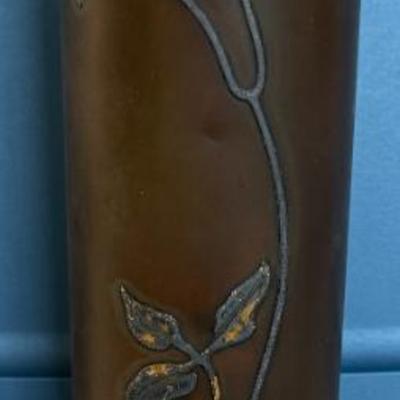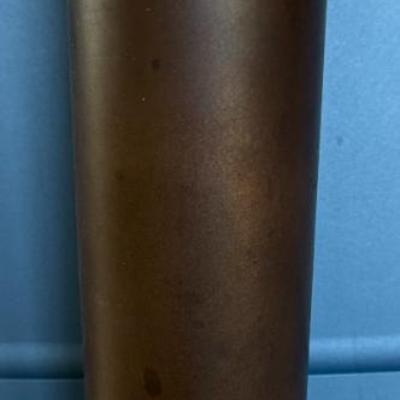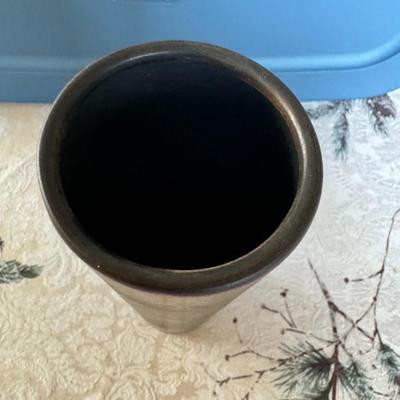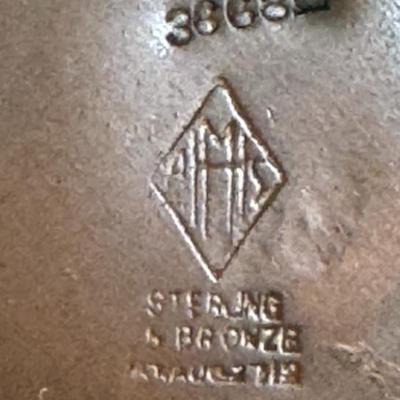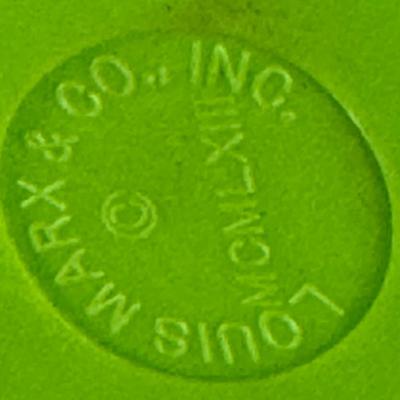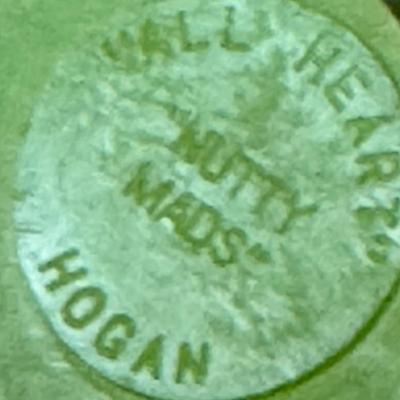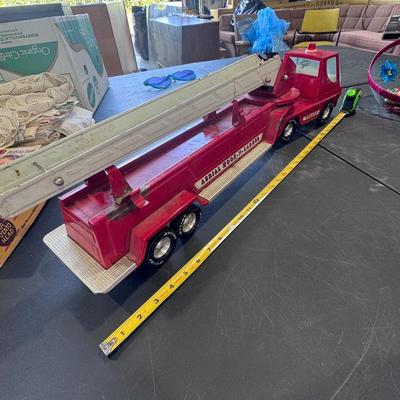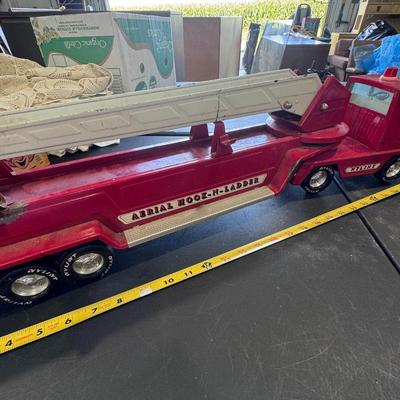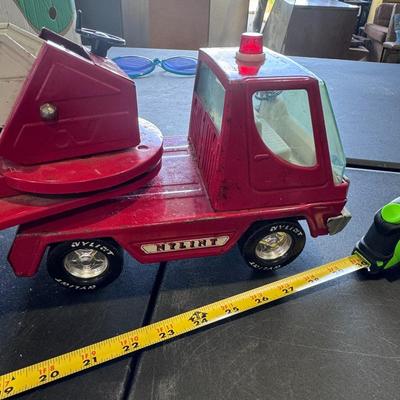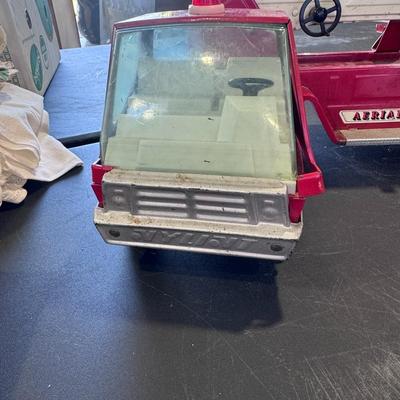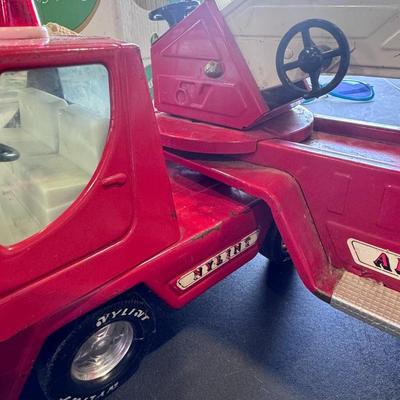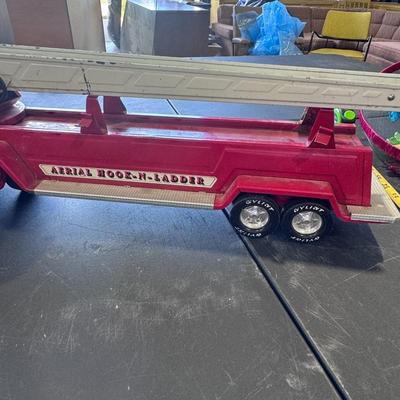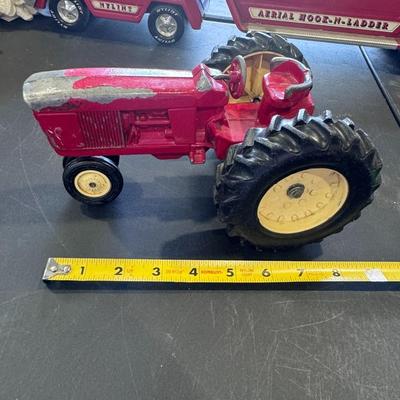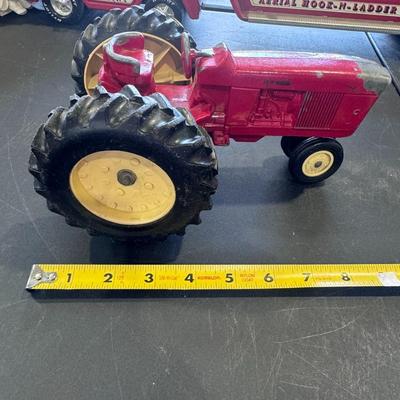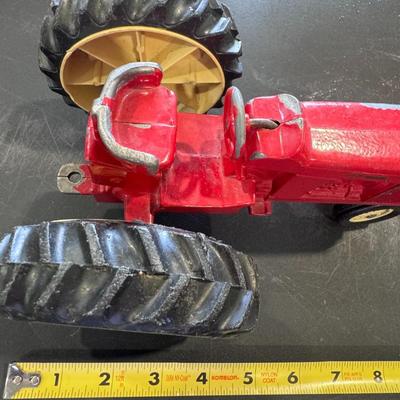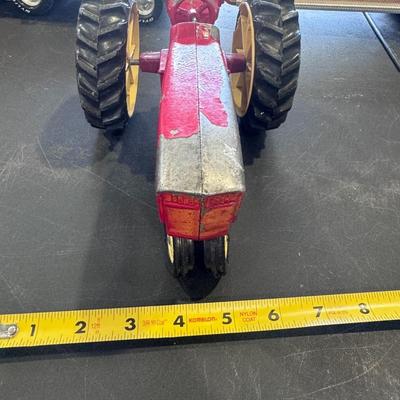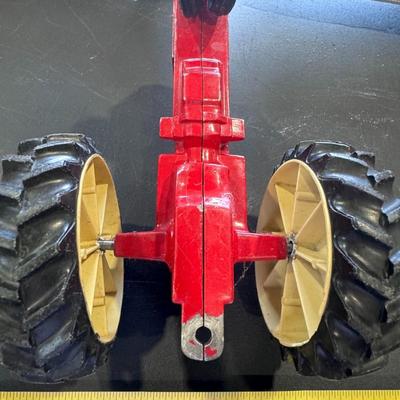-
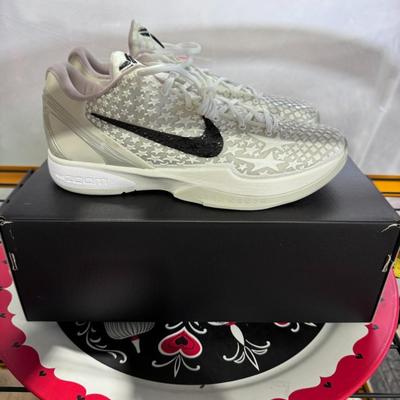
Nike Kobe 6 Protro "Sail All-Star", also known as the Nike Kobe 6 Protro "All-Star 2.0". Here's some information about this specific release: Release Date: February 13, 2025, timed with the NBA All-Star Weekend. Colorway: Sail/Black-Light Bone-White-Platinum Violet, with "Sail" being the dominant off-white color. Key Design Feature: Unlike previous Kobe 6 releases, this version features a prominent starry pattern on the lateral side of the upper, replacing the traditional snakeskin texture, while retaining the snakeskin on the medial side. 5 / 797 -

Nike Kobe 6 Protro "Sail All-Star", also known as the Nike Kobe 6 Protro "All-Star 2.0". Here's some information about this specific release: Release Date: February 13, 2025, timed with the NBA All-Star Weekend. Colorway: Sail/Black-Light Bone-White-Platinum Violet, with "Sail" being the dominant off-white color. Key Design Feature: Unlike previous Kobe 6 releases, this version features a prominent starry pattern on the lateral side of the upper, replacing the traditional snakeskin texture, while retaining the snakeskin on the medial side. 6 / 797 -
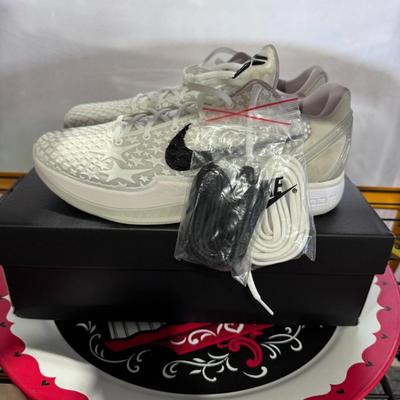
Nike Kobe 6 Protro "Sail All-Star", also known as the Nike Kobe 6 Protro "All-Star 2.0". Here's some information about this specific release: Release Date: February 13, 2025, timed with the NBA All-Star Weekend. Colorway: Sail/Black-Light Bone-White-Platinum Violet, with "Sail" being the dominant off-white color. Key Design Feature: Unlike previous Kobe 6 releases, this version features a prominent starry pattern on the lateral side of the upper, replacing the traditional snakeskin texture, while retaining the snakeskin on the medial side. 7 / 797 -

Nike Kobe 6 Protro "Sail All-Star", also known as the Nike Kobe 6 Protro "All-Star 2.0". Here's some information about this specific release: Release Date: February 13, 2025, timed with the NBA All-Star Weekend. Colorway: Sail/Black-Light Bone-White-Platinum Violet, with "Sail" being the dominant off-white color. Key Design Feature: Unlike previous Kobe 6 releases, this version features a prominent starry pattern on the lateral side of the upper, replacing the traditional snakeskin texture, while retaining the snakeskin on the medial side. 8 / 797 -

Nike Kobe 6 Protro "Sail All-Star", also known as the Nike Kobe 6 Protro "All-Star 2.0". Here's some information about this specific release: Release Date: February 13, 2025, timed with the NBA All-Star Weekend. Colorway: Sail/Black-Light Bone-White-Platinum Violet, with "Sail" being the dominant off-white color. Key Design Feature: Unlike previous Kobe 6 releases, this version features a prominent starry pattern on the lateral side of the upper, replacing the traditional snakeskin texture, while retaining the snakeskin on the medial side. 9 / 797 -
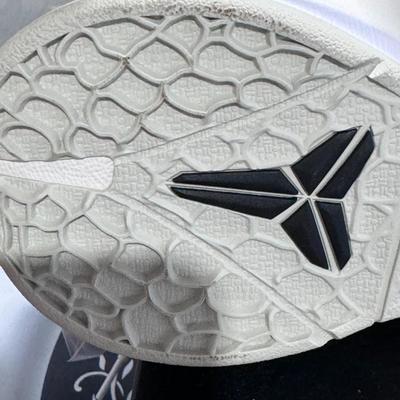
Nike Kobe 6 Protro "Sail All-Star", also known as the Nike Kobe 6 Protro "All-Star 2.0". Here's some information about this specific release: Release Date: February 13, 2025, timed with the NBA All-Star Weekend. Colorway: Sail/Black-Light Bone-White-Platinum Violet, with "Sail" being the dominant off-white color. Key Design Feature: Unlike previous Kobe 6 releases, this version features a prominent starry pattern on the lateral side of the upper, replacing the traditional snakeskin texture, while retaining the snakeskin on the medial side. 10 / 797 -

Nike Kobe 6 Protro "Sail All-Star", also known as the Nike Kobe 6 Protro "All-Star 2.0". Here's some information about this specific release: Release Date: February 13, 2025, timed with the NBA All-Star Weekend. Colorway: Sail/Black-Light Bone-White-Platinum Violet, with "Sail" being the dominant off-white color. Key Design Feature: Unlike previous Kobe 6 releases, this version features a prominent starry pattern on the lateral side of the upper, replacing the traditional snakeskin texture, while retaining the snakeskin on the medial side. 11 / 797 -

Nike Kobe 6 Protro "Sail All-Star", also known as the Nike Kobe 6 Protro "All-Star 2.0". Here's some information about this specific release: Release Date: February 13, 2025, timed with the NBA All-Star Weekend. Colorway: Sail/Black-Light Bone-White-Platinum Violet, with "Sail" being the dominant off-white color. Key Design Feature: Unlike previous Kobe 6 releases, this version features a prominent starry pattern on the lateral side of the upper, replacing the traditional snakeskin texture, while retaining the snakeskin on the medial side. 12 / 797 -
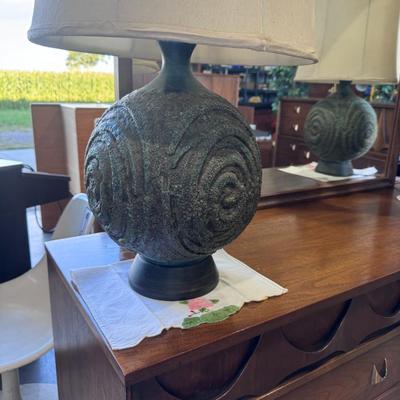
Creator: Marcello Fantoni (Designer) Dimensions: Height: 21 in (53.34 cm)Diameter: 11 in (27.94 cm) Style: Mid-Century Modern (Of the Period) Materials and Techniques: Brass,Ceramic,Fired Place of Origin: Italy Mid-Century Modern Italian ceramic table lamp, specifically attributed to the renowned artist Marcello Fantoni. Here's more information about this style of lamp: Designer & Origin: Marcello Fantoni (1915–2011) was a prominent Italian ceramist who opened his studio in Florence in 1936. He became known for his expressive and sculptural ceramic works, including lamps, particularly during the 1950s and 60s. Style & Period: This lamp is a classic example of Mid-Century Modern design, characterized by its organic shape and textured, often "lava-like," glazes, sometimes incorporating elements of Brutalism. The specific piece in your image, with its distinctive spiral pattern and textured finish, dates back to circa the 1950s. Materials & Features: Fantoni lamps commonly feature a ceramic body, often with a unique glaze and sculptural details, mounted on a base (sometimes wood or metal). The one in your image appears to be a ceramic lamp with a textured, possibly green or dark-toned glaze and a spiral motif. 13 / 797 -
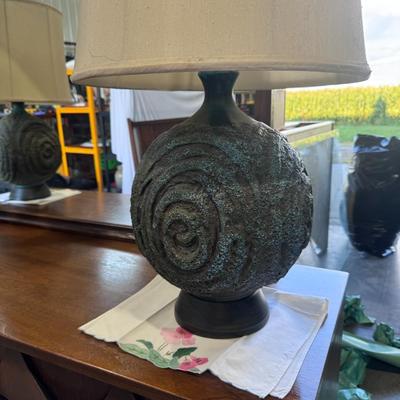
Creator: Marcello Fantoni (Designer) Dimensions: Height: 21 in (53.34 cm)Diameter: 11 in (27.94 cm) Style: Mid-Century Modern (Of the Period) Materials and Techniques: Brass,Ceramic,Fired Place of Origin: Italy Mid-Century Modern Italian ceramic table lamp, specifically attributed to the renowned artist Marcello Fantoni. Here's more information about this style of lamp: Designer & Origin: Marcello Fantoni (1915–2011) was a prominent Italian ceramist who opened his studio in Florence in 1936. He became known for his expressive and sculptural ceramic works, including lamps, particularly during the 1950s and 60s. Style & Period: This lamp is a classic example of Mid-Century Modern design, characterized by its organic shape and textured, often "lava-like," glazes, sometimes incorporating elements of Brutalism. The specific piece in your image, with its distinctive spiral pattern and textured finish, dates back to circa the 1950s. Materials & Features: Fantoni lamps commonly feature a ceramic body, often with a unique glaze and sculptural details, mounted on a base (sometimes wood or metal). The one in your image appears to be a ceramic lamp with a textured, possibly green or dark-toned glaze and a spiral motif. 14 / 797 -
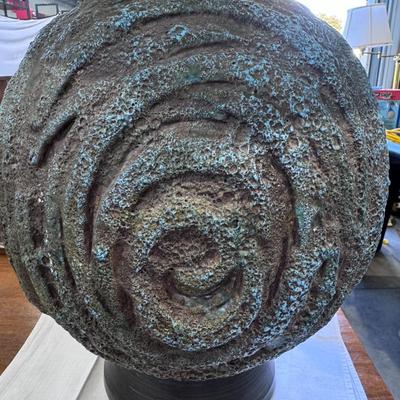
Creator: Marcello Fantoni (Designer) Dimensions: Height: 21 in (53.34 cm)Diameter: 11 in (27.94 cm) Style: Mid-Century Modern (Of the Period) Materials and Techniques: Brass,Ceramic,Fired Place of Origin: Italy Mid-Century Modern Italian ceramic table lamp, specifically attributed to the renowned artist Marcello Fantoni. Here's more information about this style of lamp: Designer & Origin: Marcello Fantoni (1915–2011) was a prominent Italian ceramist who opened his studio in Florence in 1936. He became known for his expressive and sculptural ceramic works, including lamps, particularly during the 1950s and 60s. Style & Period: This lamp is a classic example of Mid-Century Modern design, characterized by its organic shape and textured, often "lava-like," glazes, sometimes incorporating elements of Brutalism. The specific piece in your image, with its distinctive spiral pattern and textured finish, dates back to circa the 1950s. Materials & Features: Fantoni lamps commonly feature a ceramic body, often with a unique glaze and sculptural details, mounted on a base (sometimes wood or metal). The one in your image appears to be a ceramic lamp with a textured, possibly green or dark-toned glaze and a spiral motif. 15 / 797 -
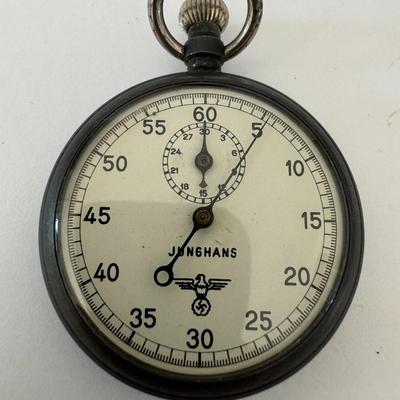
Junghans Kriegsmarine Torpedo Stopwatch, a German-made stopwatch used by the German Navy (Kriegsmarine) during World War II, notably for timing torpedo runs and depth charge detonations. Here's more information about it: Manufacturer and Era: It was manufactured by Junghans, a German watch company founded in 1861. This particular model was produced between 1939 and 1945 for military use. Features: It typically features a steel case, a 60-second outer dial, and a smaller 30-minute inset dial, as seen in the image. The top knob controls winding, starting, stopping, and resetting the stopwatch. Kriegsmarine Markings: Original Kriegsmarine-issued Junghans stopwatches usually have the "KM" (Kriegsmarine) marking and a German national eagle with a swastika engraved on the case back, though some later examples might have them on the dial. Functionality: These mechanical stopwatches were crucial for precise timing in naval operations, particularly for U-boat crews and E-boats in the North Atlantic. 16 / 797 -
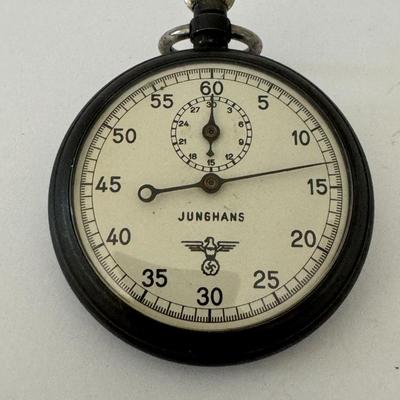
Junghans Kriegsmarine Torpedo Stopwatch, a German-made stopwatch used by the German Navy (Kriegsmarine) during World War II, notably for timing torpedo runs and depth charge detonations. Here's more information about it: Manufacturer and Era: It was manufactured by Junghans, a German watch company founded in 1861. This particular model was produced between 1939 and 1945 for military use. Features: It typically features a steel case, a 60-second outer dial, and a smaller 30-minute inset dial, as seen in the image. The top knob controls winding, starting, stopping, and resetting the stopwatch. Kriegsmarine Markings: Original Kriegsmarine-issued Junghans stopwatches usually have the "KM" (Kriegsmarine) marking and a German national eagle with a swastika engraved on the case back, though some later examples might have them on the dial. Functionality: These mechanical stopwatches were crucial for precise timing in naval operations, particularly for U-boat crews and E-boats in the North Atlantic. 17 / 797 -
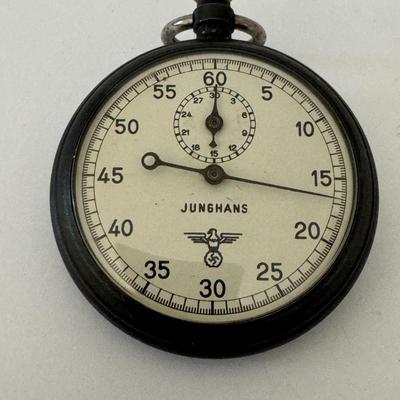
Junghans Kriegsmarine Torpedo Stopwatch, a German-made stopwatch used by the German Navy (Kriegsmarine) during World War II, notably for timing torpedo runs and depth charge detonations. Here's more information about it: Manufacturer and Era: It was manufactured by Junghans, a German watch company founded in 1861. This particular model was produced between 1939 and 1945 for military use. Features: It typically features a steel case, a 60-second outer dial, and a smaller 30-minute inset dial, as seen in the image. The top knob controls winding, starting, stopping, and resetting the stopwatch. Kriegsmarine Markings: Original Kriegsmarine-issued Junghans stopwatches usually have the "KM" (Kriegsmarine) marking and a German national eagle with a swastika engraved on the case back, though some later examples might have them on the dial. Functionality: These mechanical stopwatches were crucial for precise timing in naval operations, particularly for U-boat crews and E-boats in the North Atlantic. 18 / 797 -
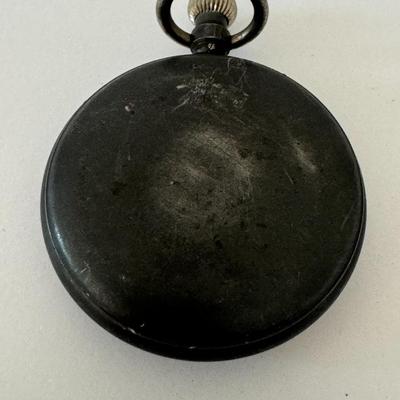
Junghans Kriegsmarine Torpedo Stopwatch, a German-made stopwatch used by the German Navy (Kriegsmarine) during World War II, notably for timing torpedo runs and depth charge detonations. Here's more information about it: Manufacturer and Era: It was manufactured by Junghans, a German watch company founded in 1861. This particular model was produced between 1939 and 1945 for military use. Features: It typically features a steel case, a 60-second outer dial, and a smaller 30-minute inset dial, as seen in the image. The top knob controls winding, starting, stopping, and resetting the stopwatch. Kriegsmarine Markings: Original Kriegsmarine-issued Junghans stopwatches usually have the "KM" (Kriegsmarine) marking and a German national eagle with a swastika engraved on the case back, though some later examples might have them on the dial. Functionality: These mechanical stopwatches were crucial for precise timing in naval operations, particularly for U-boat crews and E-boats in the North Atlantic. 19 / 797 -
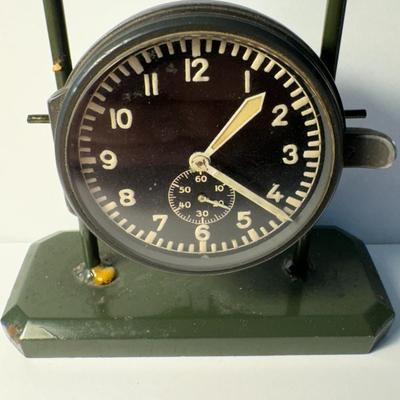
Runs good Luftwaffe Betriebsuhr, also known as a Stationsuhr or Funkeruhr, which was an operational clock used by the German military, particularly the Luftwaffe, during World War II. Here's more information about it: Purpose & Usage: These clocks were essential for synchronizing time in radio and communication stations, including those used by the Army (Heer), Air Force (Luftwaffe), and Navy (Kriegsmarine). Manufacturer: The most prominent manufacturer was Junghans, but other companies like Kienzle, Tobias Bäurle & Söhne, and Köhler & Co. also produced them. Features: They were typically mechanical timepieces with an 8-day winding mechanism and often featured a 6 cm diameter face with a separate seconds hand at the 6 o'clock position. Design & Materials: The clocks were housed in hinged casings, often placed in wooden bases, and varied in appearance and materials depending on the manufacturer and period of production, with early models featuring chromed parts and later ones often painted in military-specific colors like Luftwaffe grey. Collectibility: These clocks are considered collectible historical artifacts due to their association with WWII German military history, especially by collectors of military memorabilia 20 / 797 -
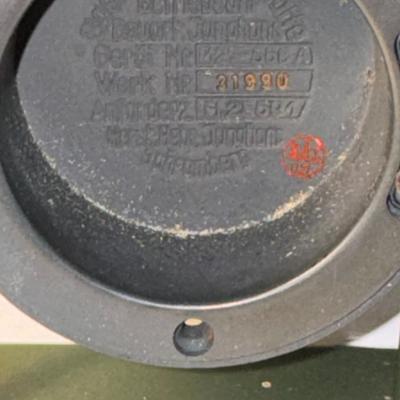
Runs good Luftwaffe Betriebsuhr, also known as a Stationsuhr or Funkeruhr, which was an operational clock used by the German military, particularly the Luftwaffe, during World War II. Here's more information about it: Purpose & Usage: These clocks were essential for synchronizing time in radio and communication stations, including those used by the Army (Heer), Air Force (Luftwaffe), and Navy (Kriegsmarine). Manufacturer: The most prominent manufacturer was Junghans, but other companies like Kienzle, Tobias Bäurle & Söhne, and Köhler & Co. also produced them. Features: They were typically mechanical timepieces with an 8-day winding mechanism and often featured a 6 cm diameter face with a separate seconds hand at the 6 o'clock position. Design & Materials: The clocks were housed in hinged casings, often placed in wooden bases, and varied in appearance and materials depending on the manufacturer and period of production, with early models featuring chromed parts and later ones often painted in military-specific colors like Luftwaffe grey. Collectibility: These clocks are considered collectible historical artifacts due to their association with WWII German military history, especially by collectors of military memorabilia 21 / 797 -
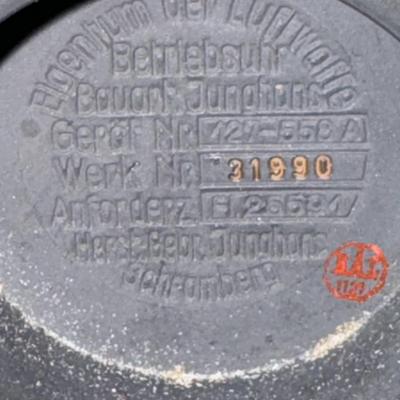
Runs good Luftwaffe Betriebsuhr, also known as a Stationsuhr or Funkeruhr, which was an operational clock used by the German military, particularly the Luftwaffe, during World War II. Here's more information about it: Purpose & Usage: These clocks were essential for synchronizing time in radio and communication stations, including those used by the Army (Heer), Air Force (Luftwaffe), and Navy (Kriegsmarine). Manufacturer: The most prominent manufacturer was Junghans, but other companies like Kienzle, Tobias Bäurle & Söhne, and Köhler & Co. also produced them. Features: They were typically mechanical timepieces with an 8-day winding mechanism and often featured a 6 cm diameter face with a separate seconds hand at the 6 o'clock position. Design & Materials: The clocks were housed in hinged casings, often placed in wooden bases, and varied in appearance and materials depending on the manufacturer and period of production, with early models featuring chromed parts and later ones often painted in military-specific colors like Luftwaffe grey. Collectibility: These clocks are considered collectible historical artifacts due to their association with WWII German military history, especially by collectors of military memorabilia 22 / 797 -
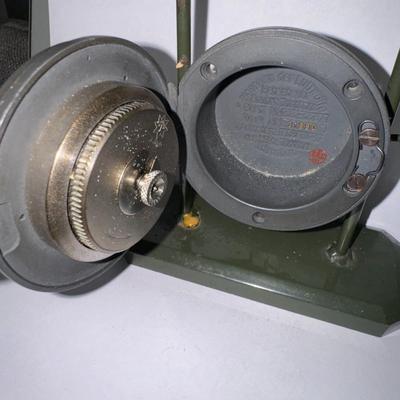
Runs good Luftwaffe Betriebsuhr, also known as a Stationsuhr or Funkeruhr, which was an operational clock used by the German military, particularly the Luftwaffe, during World War II. Here's more information about it: Purpose & Usage: These clocks were essential for synchronizing time in radio and communication stations, including those used by the Army (Heer), Air Force (Luftwaffe), and Navy (Kriegsmarine). Manufacturer: The most prominent manufacturer was Junghans, but other companies like Kienzle, Tobias Bäurle & Söhne, and Köhler & Co. also produced them. Features: They were typically mechanical timepieces with an 8-day winding mechanism and often featured a 6 cm diameter face with a separate seconds hand at the 6 o'clock position. Design & Materials: The clocks were housed in hinged casings, often placed in wooden bases, and varied in appearance and materials depending on the manufacturer and period of production, with early models featuring chromed parts and later ones often painted in military-specific colors like Luftwaffe grey. Collectibility: These clocks are considered collectible historical artifacts due to their association with WWII German military history, especially by collectors of military memorabilia 23 / 797 -
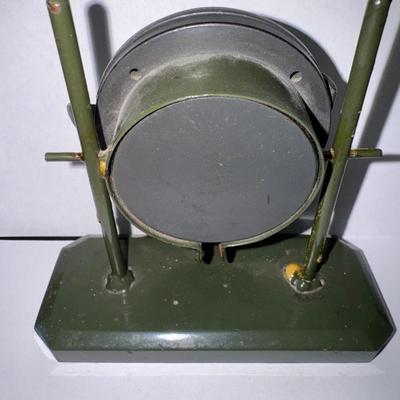
Runs good Luftwaffe Betriebsuhr, also known as a Stationsuhr or Funkeruhr, which was an operational clock used by the German military, particularly the Luftwaffe, during World War II. Here's more information about it: Purpose & Usage: These clocks were essential for synchronizing time in radio and communication stations, including those used by the Army (Heer), Air Force (Luftwaffe), and Navy (Kriegsmarine). Manufacturer: The most prominent manufacturer was Junghans, but other companies like Kienzle, Tobias Bäurle & Söhne, and Köhler & Co. also produced them. Features: They were typically mechanical timepieces with an 8-day winding mechanism and often featured a 6 cm diameter face with a separate seconds hand at the 6 o'clock position. Design & Materials: The clocks were housed in hinged casings, often placed in wooden bases, and varied in appearance and materials depending on the manufacturer and period of production, with early models featuring chromed parts and later ones often painted in military-specific colors like Luftwaffe grey. Collectibility: These clocks are considered collectible historical artifacts due to their association with WWII German military history, especially by collectors of military memorabilia 24 / 797 -
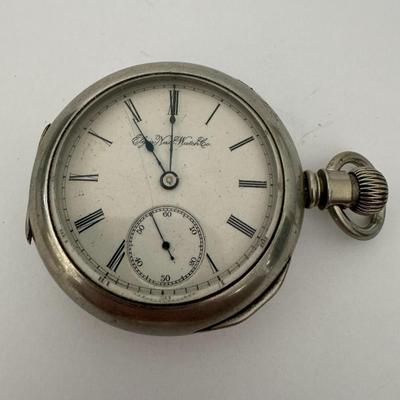
Vintage Elgin National Watch Co. Sidewinder Pocket Watch. Here's some information about this type of watch: Sidewinder Design: This term refers to the unusual placement of the winding stem at the 3 o'clock position on the side of the watch case, instead of the more common 12 o'clock position found in open-face watches or the hunter-case watches for which these movements were originally designed. Origin: Many "sidewinder" Elgin pocket watches originally housed movements intended for hunter-case watches, but these movements were later placed into open-face cases, resulting in the distinctive side-winding configuration. Features: These watches typically feature mechanical (manual) movements, a separate sub-dial for the seconds hand (usually at the 6 o'clock position), and various case materials like silveroid or gold-filled. Collectibility: Elgin pocket watches, including sidewinders, are valued for their historical significance, craftsmanship, and intricate designs, especially those with jeweled movements and fine finishes. Age: Based on historical information, many Elgin sidewinder pocket watches date back to the late 19th and early 20th centuries, with examples from the 1880s, 1890s, and early 1900s 25 / 797 -
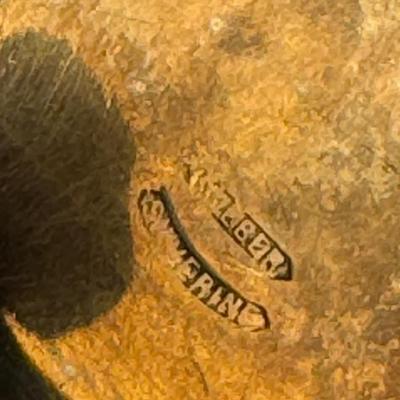
Vintage Elgin National Watch Co. Sidewinder Pocket Watch. Here's some information about this type of watch: Sidewinder Design: This term refers to the unusual placement of the winding stem at the 3 o'clock position on the side of the watch case, instead of the more common 12 o'clock position found in open-face watches or the hunter-case watches for which these movements were originally designed. Origin: Many "sidewinder" Elgin pocket watches originally housed movements intended for hunter-case watches, but these movements were later placed into open-face cases, resulting in the distinctive side-winding configuration. Features: These watches typically feature mechanical (manual) movements, a separate sub-dial for the seconds hand (usually at the 6 o'clock position), and various case materials like silveroid or gold-filled. Collectibility: Elgin pocket watches, including sidewinders, are valued for their historical significance, craftsmanship, and intricate designs, especially those with jeweled movements and fine finishes. Age: Based on historical information, many Elgin sidewinder pocket watches date back to the late 19th and early 20th centuries, with examples from the 1880s, 1890s, and early 1900s 26 / 797 -
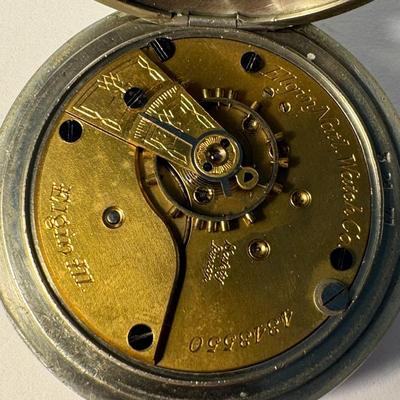
Vintage Elgin National Watch Co. Sidewinder Pocket Watch. Here's some information about this type of watch: Sidewinder Design: This term refers to the unusual placement of the winding stem at the 3 o'clock position on the side of the watch case, instead of the more common 12 o'clock position found in open-face watches or the hunter-case watches for which these movements were originally designed. Origin: Many "sidewinder" Elgin pocket watches originally housed movements intended for hunter-case watches, but these movements were later placed into open-face cases, resulting in the distinctive side-winding configuration. Features: These watches typically feature mechanical (manual) movements, a separate sub-dial for the seconds hand (usually at the 6 o'clock position), and various case materials like silveroid or gold-filled. Collectibility: Elgin pocket watches, including sidewinders, are valued for their historical significance, craftsmanship, and intricate designs, especially those with jeweled movements and fine finishes. Age: Based on historical information, many Elgin sidewinder pocket watches date back to the late 19th and early 20th centuries, with examples from the 1880s, 1890s, and early 1900s 27 / 797 -
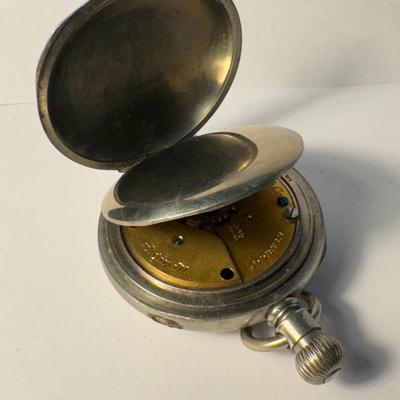
Vintage Elgin National Watch Co. Sidewinder Pocket Watch. Here's some information about this type of watch: Sidewinder Design: This term refers to the unusual placement of the winding stem at the 3 o'clock position on the side of the watch case, instead of the more common 12 o'clock position found in open-face watches or the hunter-case watches for which these movements were originally designed. Origin: Many "sidewinder" Elgin pocket watches originally housed movements intended for hunter-case watches, but these movements were later placed into open-face cases, resulting in the distinctive side-winding configuration. Features: These watches typically feature mechanical (manual) movements, a separate sub-dial for the seconds hand (usually at the 6 o'clock position), and various case materials like silveroid or gold-filled. Collectibility: Elgin pocket watches, including sidewinders, are valued for their historical significance, craftsmanship, and intricate designs, especially those with jeweled movements and fine finishes. Age: Based on historical information, many Elgin sidewinder pocket watches date back to the late 19th and early 20th centuries, with examples from the 1880s, 1890s, and early 1900s 28 / 797 -
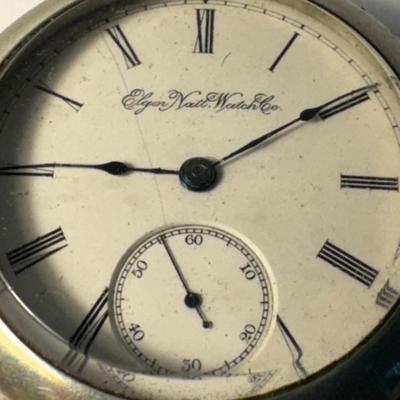
Vintage Elgin National Watch Co. Sidewinder Pocket Watch. Here's some information about this type of watch: Sidewinder Design: This term refers to the unusual placement of the winding stem at the 3 o'clock position on the side of the watch case, instead of the more common 12 o'clock position found in open-face watches or the hunter-case watches for which these movements were originally designed. Origin: Many "sidewinder" Elgin pocket watches originally housed movements intended for hunter-case watches, but these movements were later placed into open-face cases, resulting in the distinctive side-winding configuration. Features: These watches typically feature mechanical (manual) movements, a separate sub-dial for the seconds hand (usually at the 6 o'clock position), and various case materials like silveroid or gold-filled. Collectibility: Elgin pocket watches, including sidewinders, are valued for their historical significance, craftsmanship, and intricate designs, especially those with jeweled movements and fine finishes. Age: Based on historical information, many Elgin sidewinder pocket watches date back to the late 19th and early 20th centuries, with examples from the 1880s, 1890s, and early 1900s 29 / 797 -
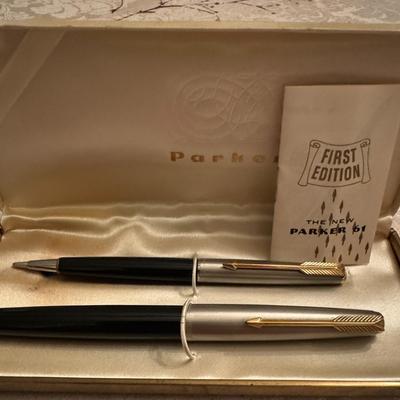
Parker 61 fountain pen and a matching ballpoint pen in a presentation box. Based on the accompanying paperwork that says "First Edition", this appears to be a Parker 61 First Edition set. The Parker 61 was first test marketed in 1953 and introduced in 1956. The "First Edition" pens, like the one in the image, likely featured specific design elements or promotional materials that differentiated them from later models. The Parker 61 is notable for its innovative capillary filling system, which allowed the pen to be filled simply by immersing the end of the barrel in ink. This set seems to include a fountain pen with this unique filling system and a matching ballpoint pen. 30 / 797 -
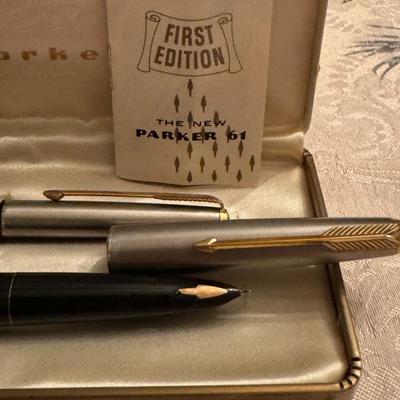
Parker 61 fountain pen and a matching ballpoint pen in a presentation box. Based on the accompanying paperwork that says "First Edition", this appears to be a Parker 61 First Edition set. The Parker 61 was first test marketed in 1953 and introduced in 1956. The "First Edition" pens, like the one in the image, likely featured specific design elements or promotional materials that differentiated them from later models. The Parker 61 is notable for its innovative capillary filling system, which allowed the pen to be filled simply by immersing the end of the barrel in ink. This set seems to include a fountain pen with this unique filling system and a matching ballpoint pen. 31 / 797 -
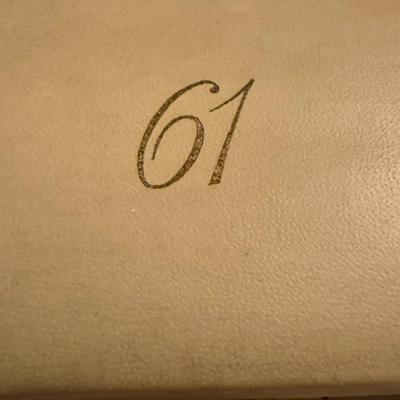
Parker 61 fountain pen and a matching ballpoint pen in a presentation box. Based on the accompanying paperwork that says "First Edition", this appears to be a Parker 61 First Edition set. The Parker 61 was first test marketed in 1953 and introduced in 1956. The "First Edition" pens, like the one in the image, likely featured specific design elements or promotional materials that differentiated them from later models. The Parker 61 is notable for its innovative capillary filling system, which allowed the pen to be filled simply by immersing the end of the barrel in ink. This set seems to include a fountain pen with this unique filling system and a matching ballpoint pen. 32 / 797 -
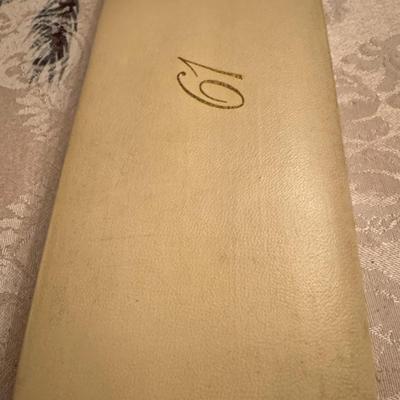
Parker 61 fountain pen and a matching ballpoint pen in a presentation box. Based on the accompanying paperwork that says "First Edition", this appears to be a Parker 61 First Edition set. The Parker 61 was first test marketed in 1953 and introduced in 1956. The "First Edition" pens, like the one in the image, likely featured specific design elements or promotional materials that differentiated them from later models. The Parker 61 is notable for its innovative capillary filling system, which allowed the pen to be filled simply by immersing the end of the barrel in ink. This set seems to include a fountain pen with this unique filling system and a matching ballpoint pen. 33 / 797 -
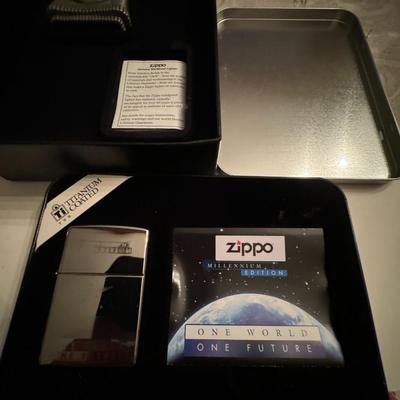
Zippo Millennium Edition lighter, featuring the design "One World... One Future". This Zippo lighter has the following characteristics: Millennium Edition: It is part of a series made to celebrate the millennium. "One World... One Future" Design: The design prominently features this phrase. Titanium Coated: The lighter has a durable titanium coating. Zippo states this was inspired by technology used on the Space Shuttle. Limited Production: The Millennium Edition was a limited release, with 100,000 produced worldwide, each with a unique bottom stamp. Computer Engraved: This edition was the first Zippo collectible with computer engraving. 34 / 797 -

Zippo Millennium Edition lighter, featuring the design "One World... One Future". This Zippo lighter has the following characteristics: Millennium Edition: It is part of a series made to celebrate the millennium. "One World... One Future" Design: The design prominently features this phrase. Titanium Coated: The lighter has a durable titanium coating. Zippo states this was inspired by technology used on the Space Shuttle. Limited Production: The Millennium Edition was a limited release, with 100,000 produced worldwide, each with a unique bottom stamp. Computer Engraved: This edition was the first Zippo collectible with computer engraving. 35 / 797 -
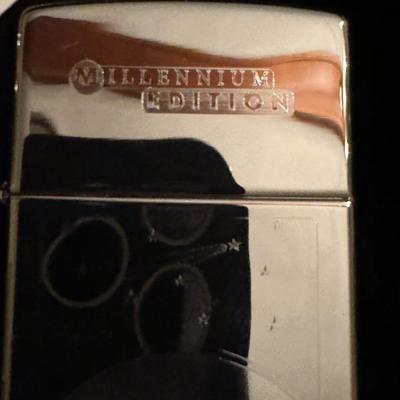
Zippo Millennium Edition lighter, featuring the design "One World... One Future". This Zippo lighter has the following characteristics: Millennium Edition: It is part of a series made to celebrate the millennium. "One World... One Future" Design: The design prominently features this phrase. Titanium Coated: The lighter has a durable titanium coating. Zippo states this was inspired by technology used on the Space Shuttle. Limited Production: The Millennium Edition was a limited release, with 100,000 produced worldwide, each with a unique bottom stamp. Computer Engraved: This edition was the first Zippo collectible with computer engraving. 36 / 797 -
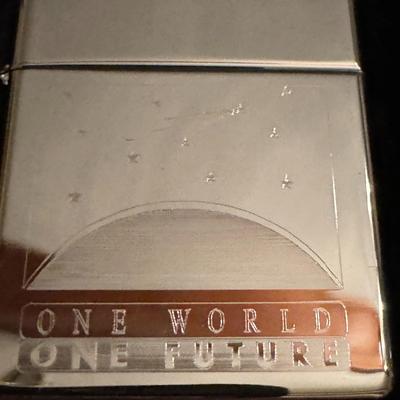
Zippo Millennium Edition lighter, featuring the design "One World... One Future". This Zippo lighter has the following characteristics: Millennium Edition: It is part of a series made to celebrate the millennium. "One World... One Future" Design: The design prominently features this phrase. Titanium Coated: The lighter has a durable titanium coating. Zippo states this was inspired by technology used on the Space Shuttle. Limited Production: The Millennium Edition was a limited release, with 100,000 produced worldwide, each with a unique bottom stamp. Computer Engraved: This edition was the first Zippo collectible with computer engraving. 37 / 797 -
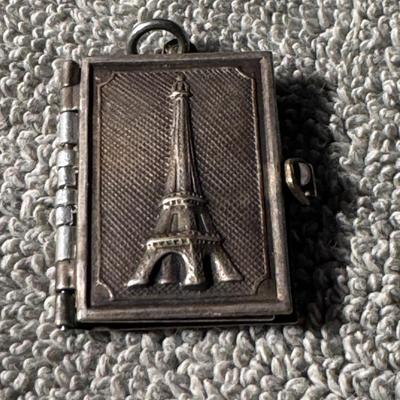
vintage Paris souvenir book locket featuring the Eiffel Tower. This type of locket often opens to reveal miniature photos or engravings related to Paris or personal memories. Here's what you might want to know about it: Type: It's a locket designed to resemble a miniature book, often used as a charm, pendant, or brooch. Origin & Era: These lockets are typically French souvenirs, with many dating back to the early 20th century, particularly the 1900s to 1930s, reflecting the popularity of Parisian tourism. Material: They are commonly made of metal, often silver-plated or sterling silver, and may feature engraved details like the Eiffel Tower shown in your image. Content: Inside, you might find tiny photographs of Parisian landmarks (like the Eiffel Tower or Notre Dame) or spaces intended for personal pictures. 38 / 797 sold -
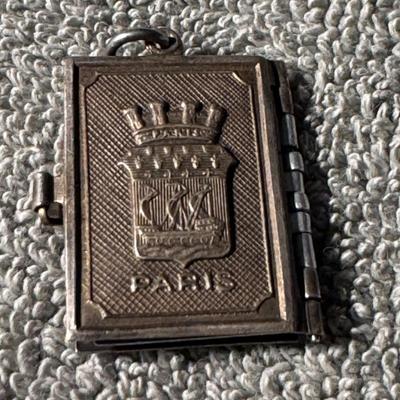
vintage Paris souvenir book locket featuring the Eiffel Tower. This type of locket often opens to reveal miniature photos or engravings related to Paris or personal memories. Here's what you might want to know about it: Type: It's a locket designed to resemble a miniature book, often used as a charm, pendant, or brooch. Origin & Era: These lockets are typically French souvenirs, with many dating back to the early 20th century, particularly the 1900s to 1930s, reflecting the popularity of Parisian tourism. Material: They are commonly made of metal, often silver-plated or sterling silver, and may feature engraved details like the Eiffel Tower shown in your image. Content: Inside, you might find tiny photographs of Parisian landmarks (like the Eiffel Tower or Notre Dame) or spaces intended for personal pictures. 39 / 797 sold -
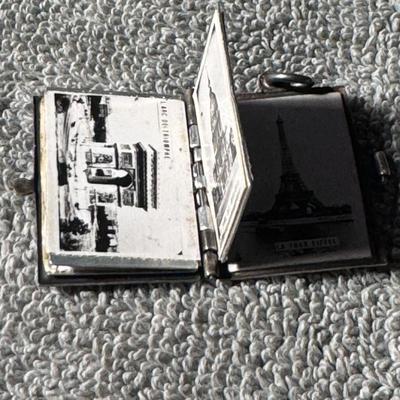
vintage Paris souvenir book locket featuring the Eiffel Tower. This type of locket often opens to reveal miniature photos or engravings related to Paris or personal memories. Here's what you might want to know about it: Type: It's a locket designed to resemble a miniature book, often used as a charm, pendant, or brooch. Origin & Era: These lockets are typically French souvenirs, with many dating back to the early 20th century, particularly the 1900s to 1930s, reflecting the popularity of Parisian tourism. Material: They are commonly made of metal, often silver-plated or sterling silver, and may feature engraved details like the Eiffel Tower shown in your image. Content: Inside, you might find tiny photographs of Parisian landmarks (like the Eiffel Tower or Notre Dame) or spaces intended for personal pictures. 40 / 797 sold -
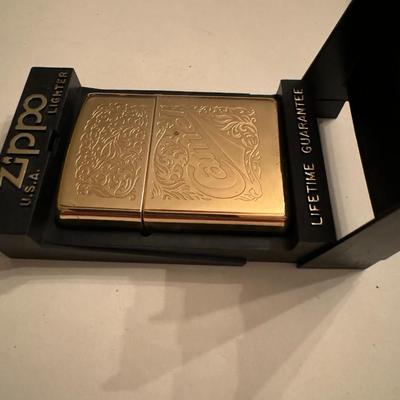
Zippo Camel lighter. It's a vintage Zippo from 1995 featuring a detailed design, described as "22kt Luster Etch". This design process involves double etching into the brass lighter, with chrome applied to create a multi-dimensional effect. Some of the design elements are chromed out for a more striking appearance. The specific design on this lighter includes scrollwork and the "Camel" logo. This particular model is a vintage 1995 Camel 22kt Luster Etch Zippo, and it's described as new and unfired 41 / 797 -
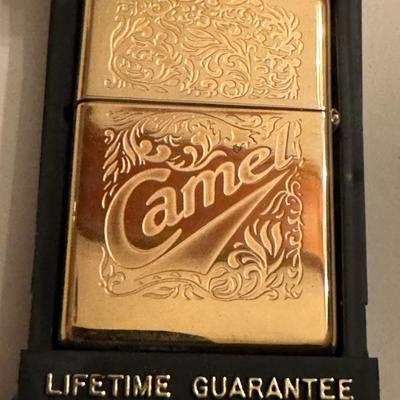
Zippo Camel lighter. It's a vintage Zippo from 1995 featuring a detailed design, described as "22kt Luster Etch". This design process involves double etching into the brass lighter, with chrome applied to create a multi-dimensional effect. Some of the design elements are chromed out for a more striking appearance. The specific design on this lighter includes scrollwork and the "Camel" logo. This particular model is a vintage 1995 Camel 22kt Luster Etch Zippo, and it's described as new and unfired 42 / 797 -
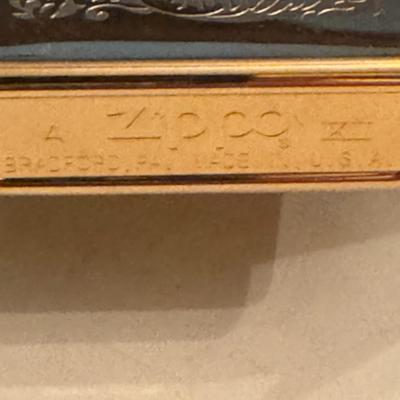
Zippo Camel lighter. It's a vintage Zippo from 1995 featuring a detailed design, described as "22kt Luster Etch". This design process involves double etching into the brass lighter, with chrome applied to create a multi-dimensional effect. Some of the design elements are chromed out for a more striking appearance. The specific design on this lighter includes scrollwork and the "Camel" logo. This particular model is a vintage 1995 Camel 22kt Luster Etch Zippo, and it's described as new and unfired 43 / 797 -
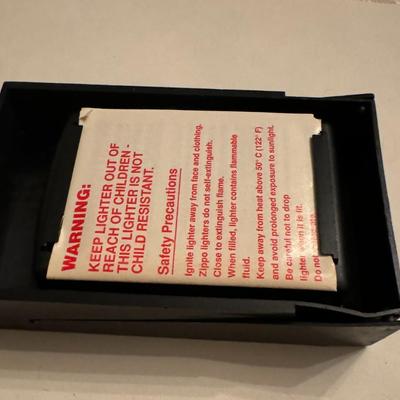
Zippo Camel lighter. It's a vintage Zippo from 1995 featuring a detailed design, described as "22kt Luster Etch". This design process involves double etching into the brass lighter, with chrome applied to create a multi-dimensional effect. Some of the design elements are chromed out for a more striking appearance. The specific design on this lighter includes scrollwork and the "Camel" logo. This particular model is a vintage 1995 Camel 22kt Luster Etch Zippo, and it's described as new and unfired 44 / 797 -
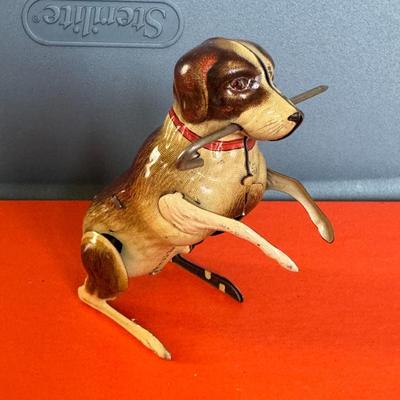
Georg Köhler Dog with Sticks Dance Figure, a rare tin toy from the 1950s. It features a jumping mechanism with a clockwork drive. The toy is approximately 75 mm long. Georg Köhler founded a game and metal goods factory in Nuremberg, Germany, in 1932, and the trademark became the letters GKN intertwined in a triangle. Initially, the company produced lithographed animal figures with clockwork mechanisms, including a frog and a bird. Later, they introduced other tin toy figures, such as the dog with a stick (as seen in the image), ducks, and squirrels. These toys were characterized by their realistic movements. This particular toy was made in the U.S. Zone of Germany, likely between 1946 and 1953. Another example of a GKN Köhler toy is a "Puss in Boots" tin litho windup from the 1940s. 45 / 797 -
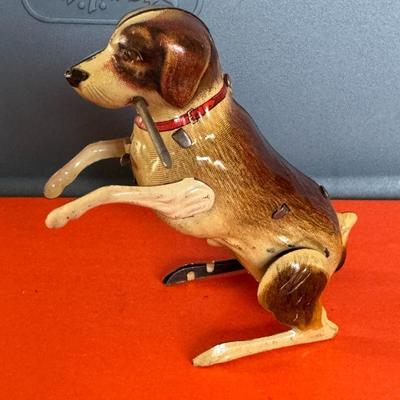
Georg Köhler Dog with Sticks Dance Figure, a rare tin toy from the 1950s. It features a jumping mechanism with a clockwork drive. The toy is approximately 75 mm long. Georg Köhler founded a game and metal goods factory in Nuremberg, Germany, in 1932, and the trademark became the letters GKN intertwined in a triangle. Initially, the company produced lithographed animal figures with clockwork mechanisms, including a frog and a bird. Later, they introduced other tin toy figures, such as the dog with a stick (as seen in the image), ducks, and squirrels. These toys were characterized by their realistic movements. This particular toy was made in the U.S. Zone of Germany, likely between 1946 and 1953. Another example of a GKN Köhler toy is a "Puss in Boots" tin litho windup from the 1940s. 46 / 797 -
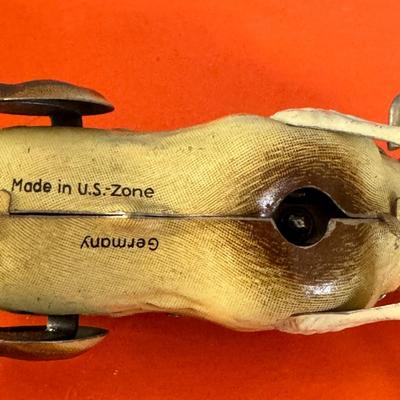
Georg Köhler Dog with Sticks Dance Figure, a rare tin toy from the 1950s. It features a jumping mechanism with a clockwork drive. The toy is approximately 75 mm long. Georg Köhler founded a game and metal goods factory in Nuremberg, Germany, in 1932, and the trademark became the letters GKN intertwined in a triangle. Initially, the company produced lithographed animal figures with clockwork mechanisms, including a frog and a bird. Later, they introduced other tin toy figures, such as the dog with a stick (as seen in the image), ducks, and squirrels. These toys were characterized by their realistic movements. This particular toy was made in the U.S. Zone of Germany, likely between 1946 and 1953. Another example of a GKN Köhler toy is a "Puss in Boots" tin litho windup from the 1940s. 47 / 797 -
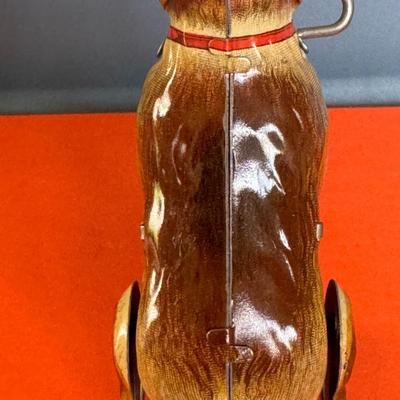
Georg Köhler Dog with Sticks Dance Figure, a rare tin toy from the 1950s. It features a jumping mechanism with a clockwork drive. The toy is approximately 75 mm long. Georg Köhler founded a game and metal goods factory in Nuremberg, Germany, in 1932, and the trademark became the letters GKN intertwined in a triangle. Initially, the company produced lithographed animal figures with clockwork mechanisms, including a frog and a bird. Later, they introduced other tin toy figures, such as the dog with a stick (as seen in the image), ducks, and squirrels. These toys were characterized by their realistic movements. This particular toy was made in the U.S. Zone of Germany, likely between 1946 and 1953. Another example of a GKN Köhler toy is a "Puss in Boots" tin litho windup from the 1940s. 48 / 797 -
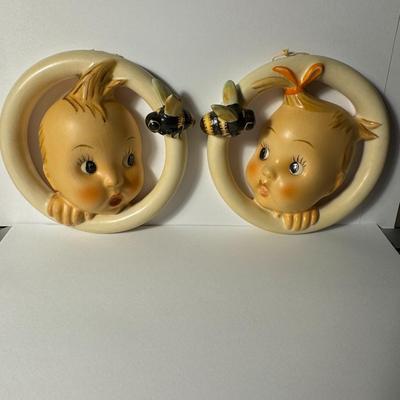
Goebel Hummel Ba-Bee Ring wall plaques. These wall plaques are part of the original Hummel Collection first released in 1935. The plaques are made of porcelain and feature a baby boy and girl looking at a bumblebee through a ring. The boy has dark blonde hair and hazel eyes, while the girl has an inquisitive expression. These plaques were designed by master sculptor Reinhold Unger. They typically measure around 5 inches in diameter. In excellent condition 49 / 797 -
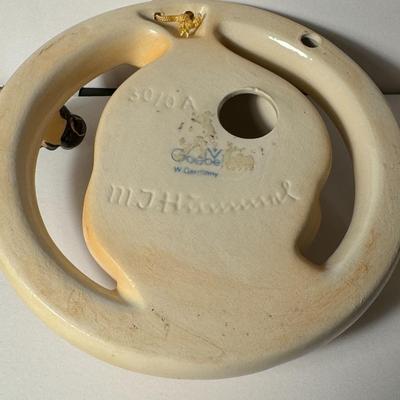
Goebel Hummel Ba-Bee Ring wall plaques. These wall plaques are part of the original Hummel Collection first released in 1935. The plaques are made of porcelain and feature a baby boy and girl looking at a bumblebee through a ring. The boy has dark blonde hair and hazel eyes, while the girl has an inquisitive expression. These plaques were designed by master sculptor Reinhold Unger. They typically measure around 5 inches in diameter. In excellent condition 50 / 797 -
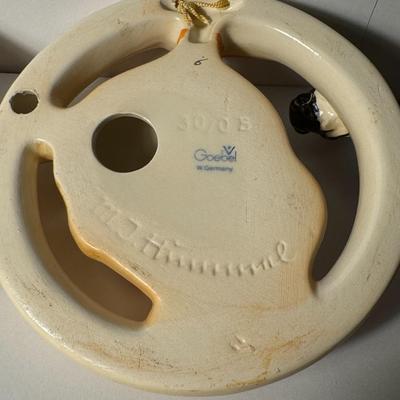
Goebel Hummel Ba-Bee Ring wall plaques. These wall plaques are part of the original Hummel Collection first released in 1935. The plaques are made of porcelain and feature a baby boy and girl looking at a bumblebee through a ring. The boy has dark blonde hair and hazel eyes, while the girl has an inquisitive expression. These plaques were designed by master sculptor Reinhold Unger. They typically measure around 5 inches in diameter. In excellent condition 51 / 797 -

The image shows a K88 Multi-function Anti-Spy Detector, a device designed to detect hidden surveillance equipment. The K88 Multi-function Anti-Spy Detector is a device designed to detect hidden surveillance equipment. There are a number of devices on the market that are designed to detect various types of surveillance equipment, including hidden cameras and audio recording devices. 52 / 797 -

The image shows a K88 Multi-function Anti-Spy Detector, a device designed to detect hidden surveillance equipment. The K88 Multi-function Anti-Spy Detector is a device designed to detect hidden surveillance equipment. There are a number of devices on the market that are designed to detect various types of surveillance equipment, including hidden cameras and audio recording devices. 53 / 797 -
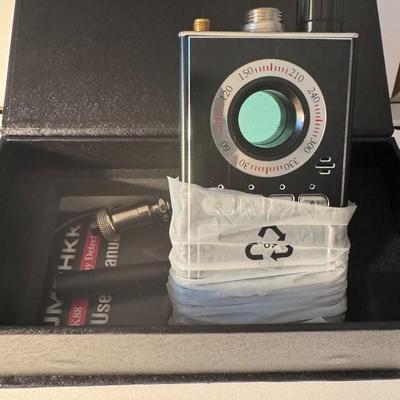
The image shows a K88 Multi-function Anti-Spy Detector, a device designed to detect hidden surveillance equipment. The K88 Multi-function Anti-Spy Detector is a device designed to detect hidden surveillance equipment. There are a number of devices on the market that are designed to detect various types of surveillance equipment, including hidden cameras and audio recording devices. 54 / 797 -
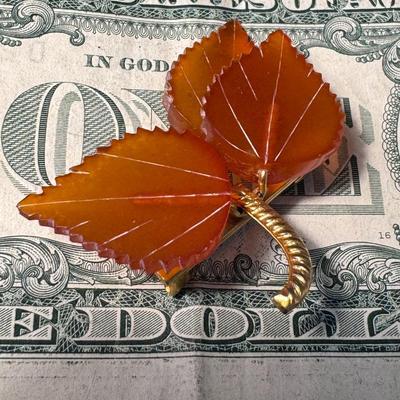
Vintage Baltic Amber Leaf Brooch, likely featuring a gold-toned setting and carved amber leaves. These brooches often contain authentic Baltic amber, known for its warm, natural hues, and are frequently found in vintage or antique jewelry markets. Here's more information about this type of brooch: Materials: Typically crafted with natural Baltic amber, often set in gold-plated brass or sterling silver, and shaped into detailed leaf motifs with carved veins. Origin: Many vintage amber leaf brooches, particularly those with a multi-leaf design, originate from regions like the Baltic states or former Soviet Union countries, such as the Kaliningrad Amber Combine in the USSR. Aesthetic: These brooches often embody a classic or Art Nouveau style, adding a touch of vintage elegance to any outfit. Collectibility: Vintage amber jewelry, especially pieces with unique designs like this leaf brooch, is sought after by collectors and enthusiasts of natural gemstone and antique jewelry. 55 / 797 -
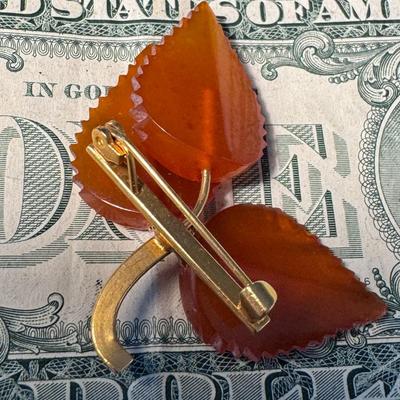
Vintage Baltic Amber Leaf Brooch, likely featuring a gold-toned setting and carved amber leaves. These brooches often contain authentic Baltic amber, known for its warm, natural hues, and are frequently found in vintage or antique jewelry markets. Here's more information about this type of brooch: Materials: Typically crafted with natural Baltic amber, often set in gold-plated brass or sterling silver, and shaped into detailed leaf motifs with carved veins. Origin: Many vintage amber leaf brooches, particularly those with a multi-leaf design, originate from regions like the Baltic states or former Soviet Union countries, such as the Kaliningrad Amber Combine in the USSR. Aesthetic: These brooches often embody a classic or Art Nouveau style, adding a touch of vintage elegance to any outfit. Collectibility: Vintage amber jewelry, especially pieces with unique designs like this leaf brooch, is sought after by collectors and enthusiasts of natural gemstone and antique jewelry. 56 / 797 -
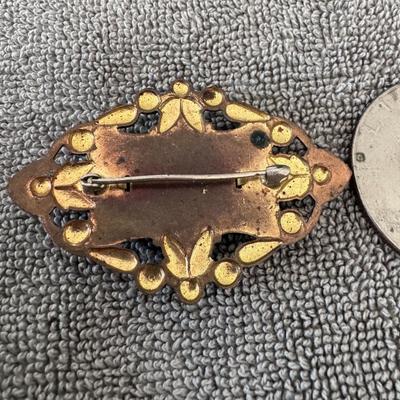
vintage Art Nouveau or Art Deco style brooch featuring a central oval green cabochon stone. Here's more information about this type of piece: Style and Period: The design, with its ornate metalwork and enamel accents, suggests it likely dates to the Art Nouveau (late 19th - early 20th century) or Art Deco (1920s-1930s) periods, known for their elaborate and nature-inspired designs or geometric patterns. Materials: The central green stone is a cabochon, often made of glass or celluloid in vintage pieces, sometimes simulating more precious stones like jade. The surrounding decorative elements appear to be enamel in shades of green, yellow, and blue, set in a gold-tone metal, likely brass. 57 / 797 -
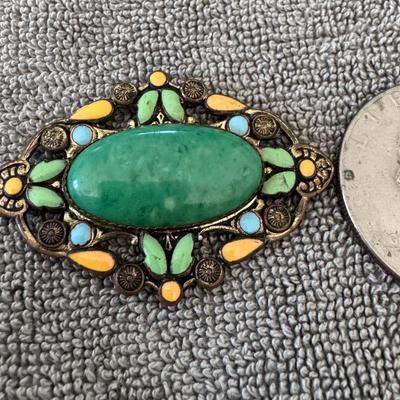
vintage Art Nouveau or Art Deco style brooch featuring a central oval green cabochon stone. Here's more information about this type of piece: Style and Period: The design, with its ornate metalwork and enamel accents, suggests it likely dates to the Art Nouveau (late 19th - early 20th century) or Art Deco (1920s-1930s) periods, known for their elaborate and nature-inspired designs or geometric patterns. Materials: The central green stone is a cabochon, often made of glass or celluloid in vintage pieces, sometimes simulating more precious stones like jade. The surrounding decorative elements appear to be enamel in shades of green, yellow, and blue, set in a gold-tone metal, likely brass. 58 / 797 -
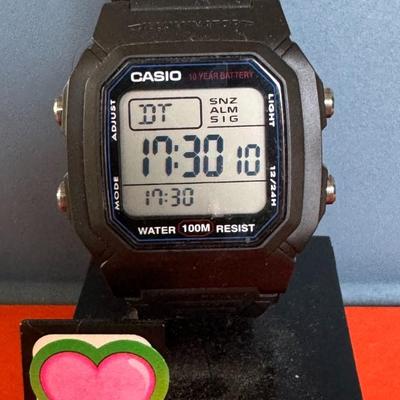
The image shows a Casio W-800H watch with its display indicating "DT" and two time settings: 17:30 This indicates that the watch is in Dual Time (DT) mode, which allows you to keep track of the time in two different time zones. Here's a summary of the watch's features based on the image and supporting search results: Dual Time: The "DT" on the display signifies that the dual time function is active, allowing the user to view the time in two zones simultaneously. Time Display: The primary time displayed is 17:30, and the second time in the other time zone is 10:30. 10-Year Battery: The watch features a 10-year battery life, powered by a CR2025 battery. Water Resistance: The watch is water-resistant up to 100 meters, making it suitable for swimming and snorkeling. LED Backlight: It includes an LED backlight for visibility in low-light conditions. Other Features: The watch also includes a stopwatch, a multi-function alarm (with snooze), an hourly time signal, and a full auto-calendar (preprogrammed until 2099). Display: It displays the day of the week, year, month, and date on the screen. Size and Weight: The case measures 44.2 × 36.8 × 13.4 mm and weighs 37g. 59 / 797 -
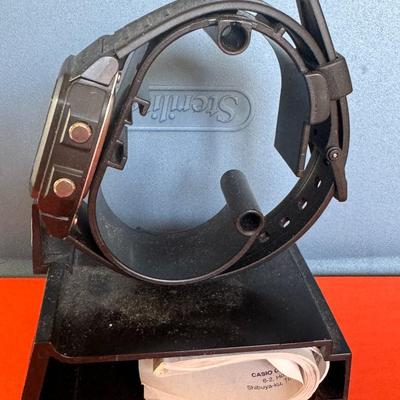
The image shows a Casio W-800H watch with its display indicating "DT" and two time settings: 17:30 This indicates that the watch is in Dual Time (DT) mode, which allows you to keep track of the time in two different time zones. Here's a summary of the watch's features based on the image and supporting search results: Dual Time: The "DT" on the display signifies that the dual time function is active, allowing the user to view the time in two zones simultaneously. Time Display: The primary time displayed is 17:30, and the second time in the other time zone is 10:30. 10-Year Battery: The watch features a 10-year battery life, powered by a CR2025 battery. Water Resistance: The watch is water-resistant up to 100 meters, making it suitable for swimming and snorkeling. LED Backlight: It includes an LED backlight for visibility in low-light conditions. Other Features: The watch also includes a stopwatch, a multi-function alarm (with snooze), an hourly time signal, and a full auto-calendar (preprogrammed until 2099). Display: It displays the day of the week, year, month, and date on the screen. Size and Weight: The case measures 44.2 × 36.8 × 13.4 mm and weighs 37g. 60 / 797 -
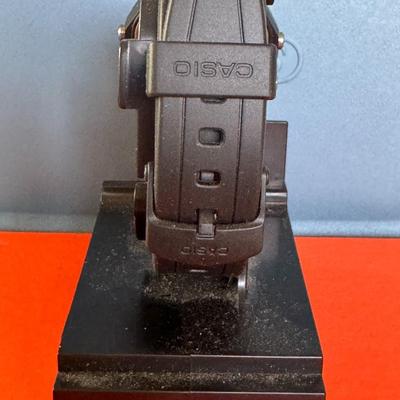
The image shows a Casio W-800H watch with its display indicating "DT" and two time settings: 17:30 This indicates that the watch is in Dual Time (DT) mode, which allows you to keep track of the time in two different time zones. Here's a summary of the watch's features based on the image and supporting search results: Dual Time: The "DT" on the display signifies that the dual time function is active, allowing the user to view the time in two zones simultaneously. Time Display: The primary time displayed is 17:30, and the second time in the other time zone is 10:30. 10-Year Battery: The watch features a 10-year battery life, powered by a CR2025 battery. Water Resistance: The watch is water-resistant up to 100 meters, making it suitable for swimming and snorkeling. LED Backlight: It includes an LED backlight for visibility in low-light conditions. Other Features: The watch also includes a stopwatch, a multi-function alarm (with snooze), an hourly time signal, and a full auto-calendar (preprogrammed until 2099). Display: It displays the day of the week, year, month, and date on the screen. Size and Weight: The case measures 44.2 × 36.8 × 13.4 mm and weighs 37g. 61 / 797 -
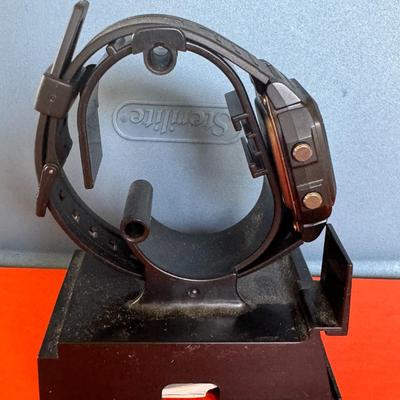
The image shows a Casio W-800H watch with its display indicating "DT" and two time settings: 17:30 This indicates that the watch is in Dual Time (DT) mode, which allows you to keep track of the time in two different time zones. Here's a summary of the watch's features based on the image and supporting search results: Dual Time: The "DT" on the display signifies that the dual time function is active, allowing the user to view the time in two zones simultaneously. Time Display: The primary time displayed is 17:30, and the second time in the other time zone is 10:30. 10-Year Battery: The watch features a 10-year battery life, powered by a CR2025 battery. Water Resistance: The watch is water-resistant up to 100 meters, making it suitable for swimming and snorkeling. LED Backlight: It includes an LED backlight for visibility in low-light conditions. Other Features: The watch also includes a stopwatch, a multi-function alarm (with snooze), an hourly time signal, and a full auto-calendar (preprogrammed until 2099). Display: It displays the day of the week, year, month, and date on the screen. Size and Weight: The case measures 44.2 × 36.8 × 13.4 mm and weighs 37g. 62 / 797 -
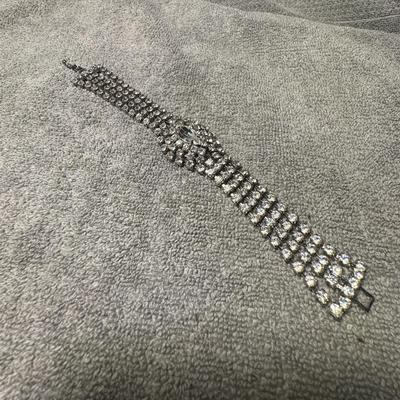
rhinestone bracelet, featuring multiple rows of clear, sparkling rhinestones and a central embellishment with a larger, possibly emerald-cut, stone. Here's more information about this style of jewelry: Materials: This type of bracelet typically consists of clear glass rhinestones set in a silver-toned base metal, which can include rhodium-plated settings. Design: The bracelet prominently displays multiple rows of prong-set rhinestones, giving it a wide and elaborate appearance, characteristic of vintage or statement jewelry. Era and Style: Similar designs are often associated with mid-century styles, specifically the 1940s-1970s, and are often referred to as "vintage" or "estate jewelry". 63 / 797 -
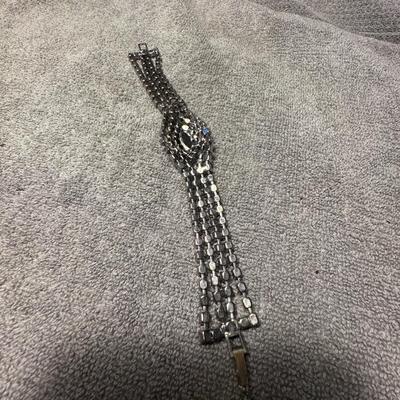
rhinestone bracelet, featuring multiple rows of clear, sparkling rhinestones and a central embellishment with a larger, possibly emerald-cut, stone. Here's more information about this style of jewelry: Materials: This type of bracelet typically consists of clear glass rhinestones set in a silver-toned base metal, which can include rhodium-plated settings. Design: The bracelet prominently displays multiple rows of prong-set rhinestones, giving it a wide and elaborate appearance, characteristic of vintage or statement jewelry. Era and Style: Similar designs are often associated with mid-century styles, specifically the 1940s-1970s, and are often referred to as "vintage" or "estate jewelry". 64 / 797 -
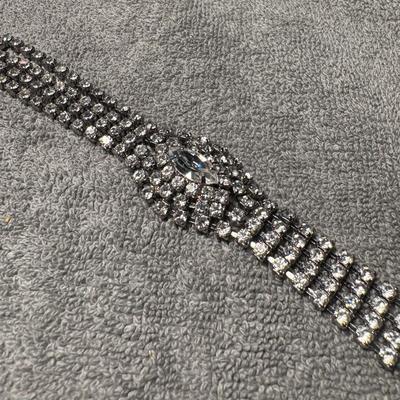
rhinestone bracelet, featuring multiple rows of clear, sparkling rhinestones and a central embellishment with a larger, possibly emerald-cut, stone. Here's more information about this style of jewelry: Materials: This type of bracelet typically consists of clear glass rhinestones set in a silver-toned base metal, which can include rhodium-plated settings. Design: The bracelet prominently displays multiple rows of prong-set rhinestones, giving it a wide and elaborate appearance, characteristic of vintage or statement jewelry. Era and Style: Similar designs are often associated with mid-century styles, specifically the 1940s-1970s, and are often referred to as "vintage" or "estate jewelry". 65 / 797 -
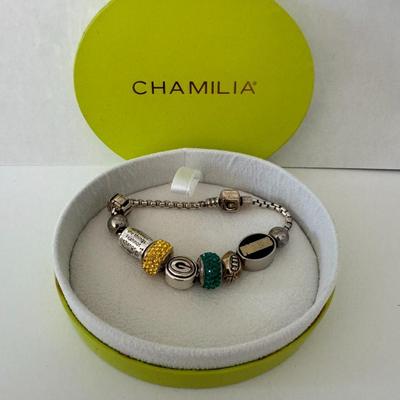
Chamilia Charm Bracelet with various charms. These include Green Bay Packers-themed charms and an inspirational charm with the words "the things I cannot". The bracelet is displayed in a round, lime green Chamilia box. Here's more about the product: Chamilia Brand: Chamilia is a brand known for interchangeable charm jewelry, such as bracelets, charms, beads, necklaces, and earrings. Charm Personalization: The bracelet can be customized to reflect personal interests and passions by selecting different charms. Green Bay Packers Theme: Several charms represent the Green Bay Packers NFL team, using team colors (green and gold) and possibly team logos or related designs. Inspirational Charm: The charm with "the things I cannot" suggests an AA, inspirational or motivational theme, which is common in charm bracelet collections. Interchangeability: Chamilia charms are designed to be interchangeable, allowing the bracelet to be customized for different occasions or interests. 66 / 797 -
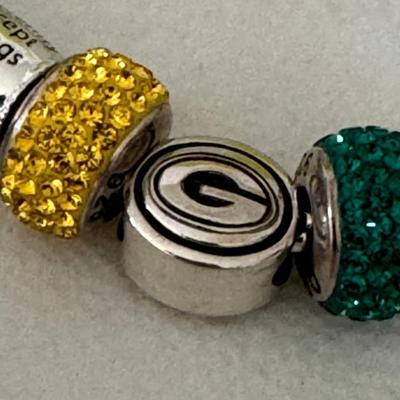
Chamilia Charm Bracelet with various charms. These include Green Bay Packers-themed charms and an inspirational charm with the words "the things I cannot". The bracelet is displayed in a round, lime green Chamilia box. Here's more about the product: Chamilia Brand: Chamilia is a brand known for interchangeable charm jewelry, such as bracelets, charms, beads, necklaces, and earrings. Charm Personalization: The bracelet can be customized to reflect personal interests and passions by selecting different charms. Green Bay Packers Theme: Several charms represent the Green Bay Packers NFL team, using team colors (green and gold) and possibly team logos or related designs. Inspirational Charm: The charm with "the things I cannot" suggests an AA, inspirational or motivational theme, which is common in charm bracelet collections. Interchangeability: Chamilia charms are designed to be interchangeable, allowing the bracelet to be customized for different occasions or interests. 67 / 797 -
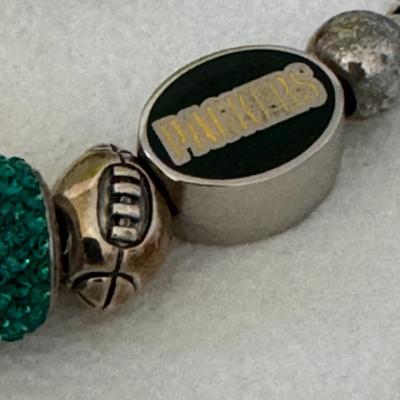
Chamilia Charm Bracelet with various charms. These include Green Bay Packers-themed charms and an inspirational charm with the words "the things I cannot". The bracelet is displayed in a round, lime green Chamilia box. Here's more about the product: Chamilia Brand: Chamilia is a brand known for interchangeable charm jewelry, such as bracelets, charms, beads, necklaces, and earrings. Charm Personalization: The bracelet can be customized to reflect personal interests and passions by selecting different charms. Green Bay Packers Theme: Several charms represent the Green Bay Packers NFL team, using team colors (green and gold) and possibly team logos or related designs. Inspirational Charm: The charm with "the things I cannot" suggests an AA, inspirational or motivational theme, which is common in charm bracelet collections. Interchangeability: Chamilia charms are designed to be interchangeable, allowing the bracelet to be customized for different occasions or interests. 68 / 797 -
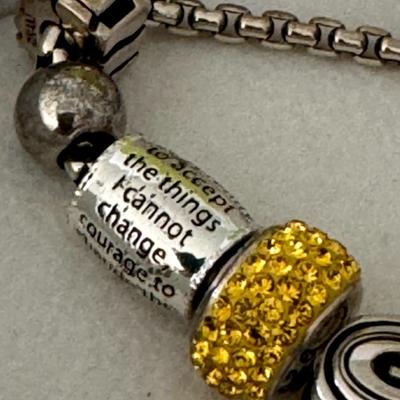
Chamilia Charm Bracelet with various charms. These include Green Bay Packers-themed charms and an inspirational charm with the words "the things I cannot". The bracelet is displayed in a round, lime green Chamilia box. Here's more about the product: Chamilia Brand: Chamilia is a brand known for interchangeable charm jewelry, such as bracelets, charms, beads, necklaces, and earrings. Charm Personalization: The bracelet can be customized to reflect personal interests and passions by selecting different charms. Green Bay Packers Theme: Several charms represent the Green Bay Packers NFL team, using team colors (green and gold) and possibly team logos or related designs. Inspirational Charm: The charm with "the things I cannot" suggests an AA, inspirational or motivational theme, which is common in charm bracelet collections. Interchangeability: Chamilia charms are designed to be interchangeable, allowing the bracelet to be customized for different occasions or interests. 69 / 797 -
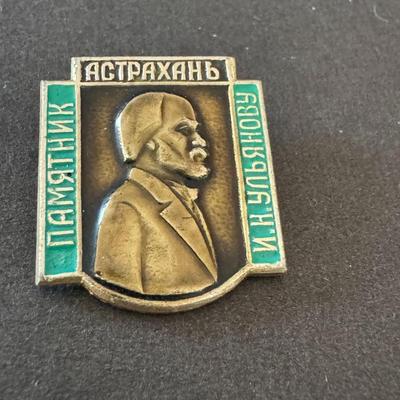
The pin depicts Ilya Nikolayevich Ulyanov, the father of Vladimir Lenin, a prominent figure in Russian education and public schools during the 19th century. Location: The monument shown on the pin is located in Astrakhan, a city in southern Russia. Historical Context: This type of pin ("znachki" in Russian) was a common collectible and souvenir during the Soviet era, often commemorating national achievements, historical figures, or significant locations. 70 / 797 -
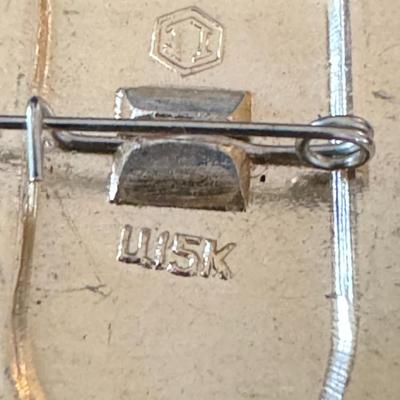
The pin depicts Ilya Nikolayevich Ulyanov, the father of Vladimir Lenin, a prominent figure in Russian education and public schools during the 19th century. Location: The monument shown on the pin is located in Astrakhan, a city in southern Russia. Historical Context: This type of pin ("znachki" in Russian) was a common collectible and souvenir during the Soviet era, often commemorating national achievements, historical figures, or significant locations. 71 / 797 -
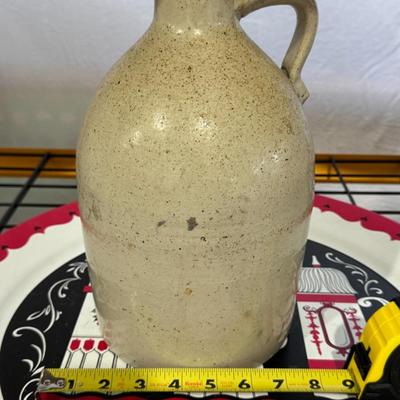
primitive stoneware jug, likely an antique piece used historically for storing various liquids like water, milk, or spirits. Here's more information about this type of jug: Material and Glaze: This jug is made of stoneware, a durable and waterproof type of pottery fired at high temperatures. Its slightly textured, often shiny surface is characteristic of a salt glaze, created by introducing salt into the kiln during firing, which reacts with the clay to form a glassy coating. Form and Era: The ovoid, or "beehive," shape seen in the image was common for American stoneware jugs from the 18th and 19th centuries, particularly in the early to mid-1800s. Utilitarian Purpose: These jugs were essential household items before the widespread use of refrigeration, serving as containers for liquids, and sometimes even for butter or other food items. 72 / 797 -
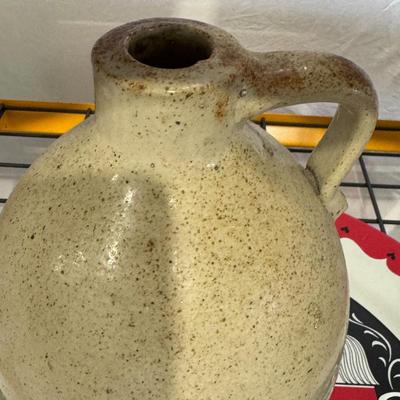
primitive stoneware jug, likely an antique piece used historically for storing various liquids like water, milk, or spirits. Here's more information about this type of jug: Material and Glaze: This jug is made of stoneware, a durable and waterproof type of pottery fired at high temperatures. Its slightly textured, often shiny surface is characteristic of a salt glaze, created by introducing salt into the kiln during firing, which reacts with the clay to form a glassy coating. Form and Era: The ovoid, or "beehive," shape seen in the image was common for American stoneware jugs from the 18th and 19th centuries, particularly in the early to mid-1800s. Utilitarian Purpose: These jugs were essential household items before the widespread use of refrigeration, serving as containers for liquids, and sometimes even for butter or other food items. 73 / 797 -
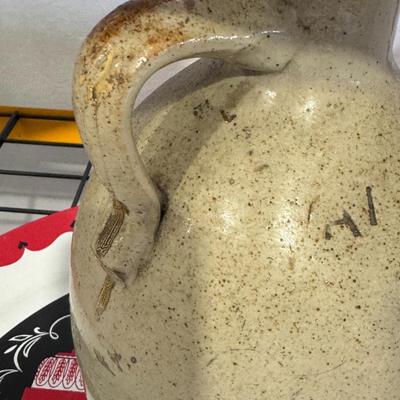
primitive stoneware jug, likely an antique piece used historically for storing various liquids like water, milk, or spirits. Here's more information about this type of jug: Material and Glaze: This jug is made of stoneware, a durable and waterproof type of pottery fired at high temperatures. Its slightly textured, often shiny surface is characteristic of a salt glaze, created by introducing salt into the kiln during firing, which reacts with the clay to form a glassy coating. Form and Era: The ovoid, or "beehive," shape seen in the image was common for American stoneware jugs from the 18th and 19th centuries, particularly in the early to mid-1800s. Utilitarian Purpose: These jugs were essential household items before the widespread use of refrigeration, serving as containers for liquids, and sometimes even for butter or other food items. 74 / 797 -
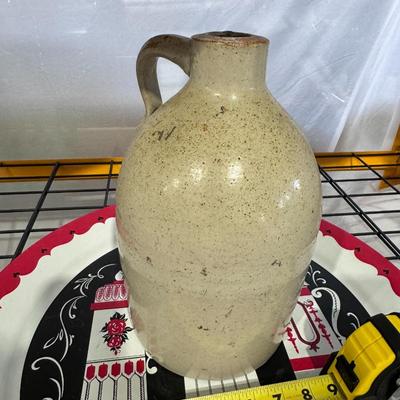
primitive stoneware jug, likely an antique piece used historically for storing various liquids like water, milk, or spirits. Here's more information about this type of jug: Material and Glaze: This jug is made of stoneware, a durable and waterproof type of pottery fired at high temperatures. Its slightly textured, often shiny surface is characteristic of a salt glaze, created by introducing salt into the kiln during firing, which reacts with the clay to form a glassy coating. Form and Era: The ovoid, or "beehive," shape seen in the image was common for American stoneware jugs from the 18th and 19th centuries, particularly in the early to mid-1800s. Utilitarian Purpose: These jugs were essential household items before the widespread use of refrigeration, serving as containers for liquids, and sometimes even for butter or other food items. 75 / 797 -
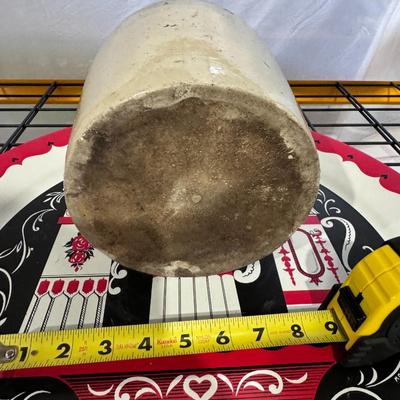
primitive stoneware jug, likely an antique piece used historically for storing various liquids like water, milk, or spirits. Here's more information about this type of jug: Material and Glaze: This jug is made of stoneware, a durable and waterproof type of pottery fired at high temperatures. Its slightly textured, often shiny surface is characteristic of a salt glaze, created by introducing salt into the kiln during firing, which reacts with the clay to form a glassy coating. Form and Era: The ovoid, or "beehive," shape seen in the image was common for American stoneware jugs from the 18th and 19th centuries, particularly in the early to mid-1800s. Utilitarian Purpose: These jugs were essential household items before the widespread use of refrigeration, serving as containers for liquids, and sometimes even for butter or other food items. 76 / 797 -
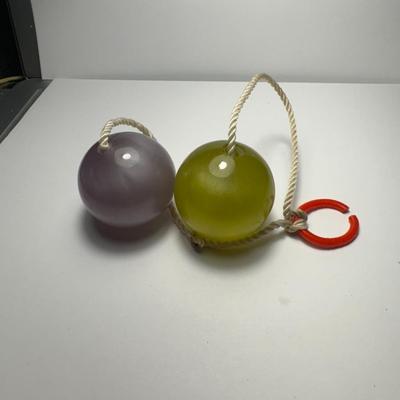
vintage Clackers, also known as Clacker Balls, a popular toy from the late 1960s and early 1970s. They consist of two hard spheres (originally glass, later plastic) on a string attached to a handle or finger tab. The goal is to swing them up and down, making them hit each other and create a "clacking" sound. The specific clackers in the image are green and purple 87 / 797 -
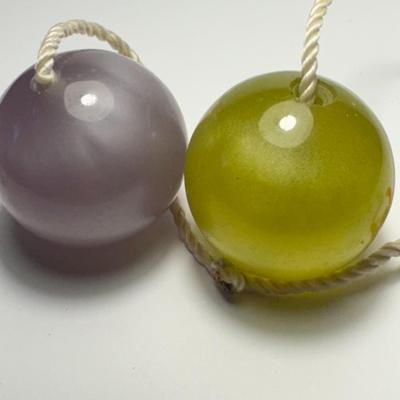
vintage Clackers, also known as Clacker Balls, a popular toy from the late 1960s and early 1970s. They consist of two hard spheres (originally glass, later plastic) on a string attached to a handle or finger tab. The goal is to swing them up and down, making them hit each other and create a "clacking" sound. The specific clackers in the image are green and purple 88 / 797 -
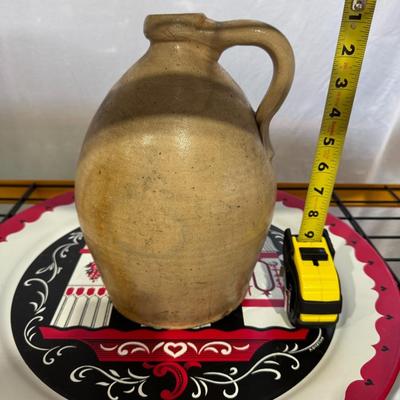
Lyon's primitive stoneware jug. Here's some information about this type of item: Description: It's a classic, ovoid-shaped jug made of stoneware, likely with a salt glaze, given its appearance and the commonality of this finish on such pieces. Historical Use: These jugs were commonly used in the 18th and 19th centuries for storing and transporting various liquids, including water, milk, cider, and spirits like whiskey. 94 / 797 -
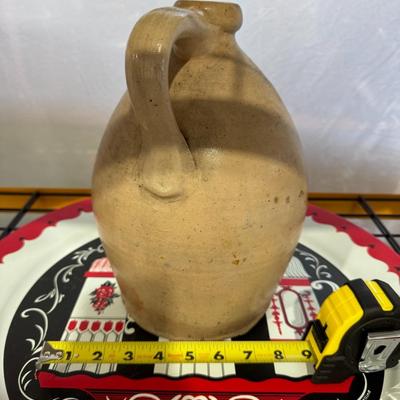
Lyon's primitive stoneware jug. Here's some information about this type of item: Description: It's a classic, ovoid-shaped jug made of stoneware, likely with a salt glaze, given its appearance and the commonality of this finish on such pieces. Historical Use: These jugs were commonly used in the 18th and 19th centuries for storing and transporting various liquids, including water, milk, cider, and spirits like whiskey. 95 / 797 -
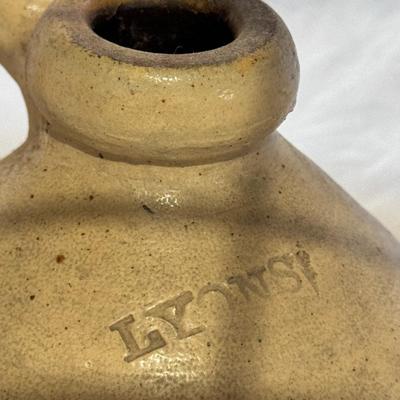
Lyon's primitive stoneware jug. Here's some information about this type of item: Description: It's a classic, ovoid-shaped jug made of stoneware, likely with a salt glaze, given its appearance and the commonality of this finish on such pieces. Historical Use: These jugs were commonly used in the 18th and 19th centuries for storing and transporting various liquids, including water, milk, cider, and spirits like whiskey. 96 / 797 -
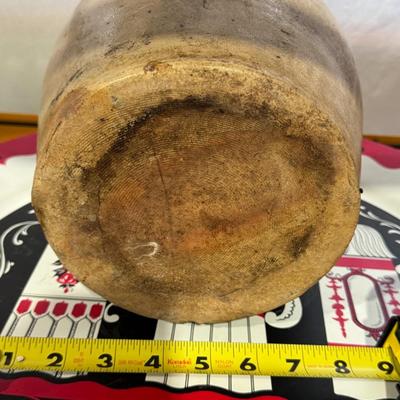
Lyon's primitive stoneware jug. Here's some information about this type of item: Description: It's a classic, ovoid-shaped jug made of stoneware, likely with a salt glaze, given its appearance and the commonality of this finish on such pieces. Historical Use: These jugs were commonly used in the 18th and 19th centuries for storing and transporting various liquids, including water, milk, cider, and spirits like whiskey. 97 / 797 -
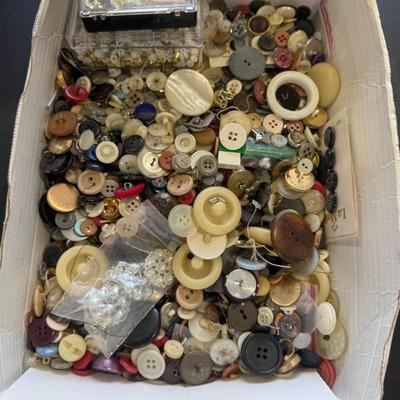
Large box of vintage buttons, mixed 98 / 797 -
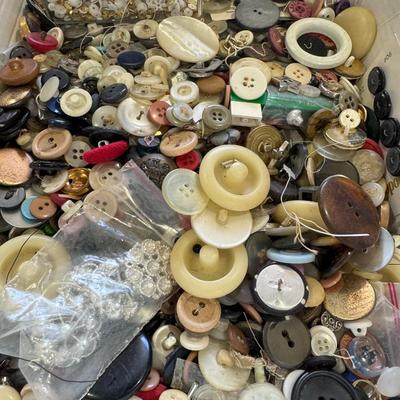
Large box of vintage buttons, mixed 99 / 797 -
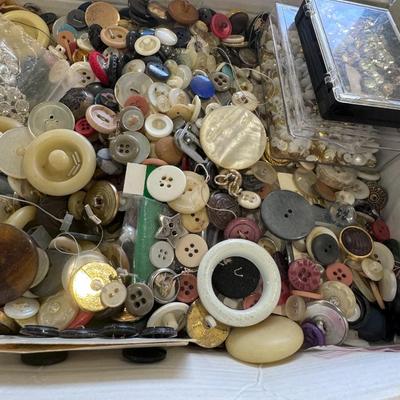
Large box of vintage buttons, mixed 100 / 797
Photos 1 - 100 of 797
Per page:
